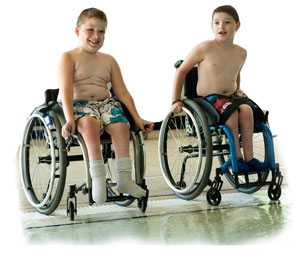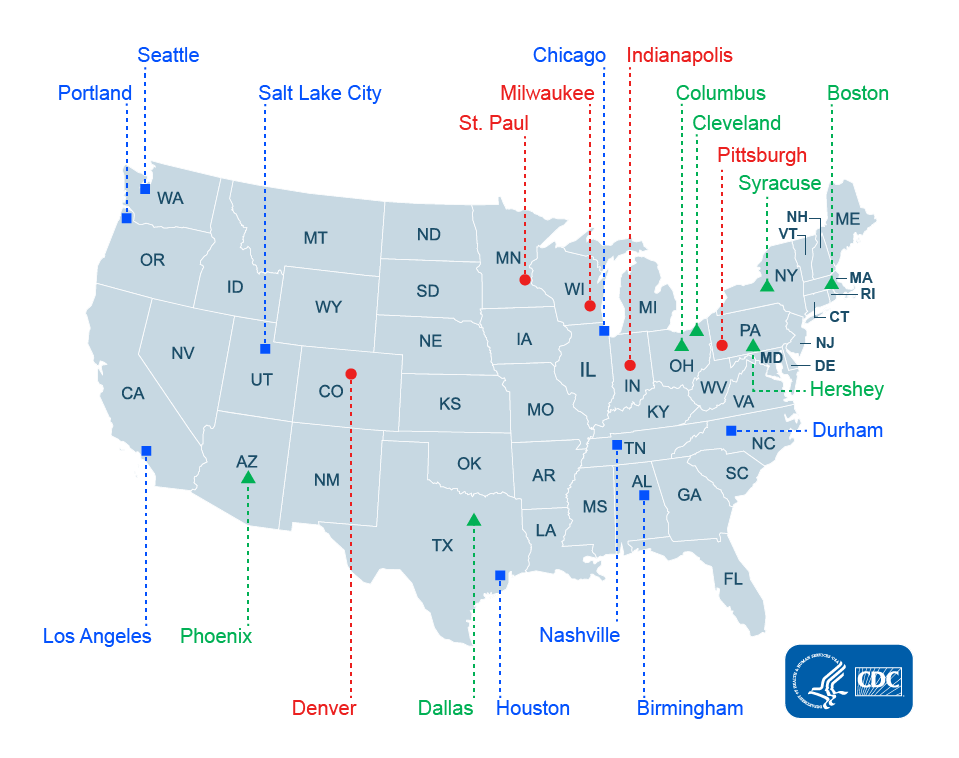About the National Spina Bifida Patient Registry

CDC programs and research improve the quality of life and encourage full participation at every age for those with spina bifida. In 2006, a survey of spina bifida clinics across the United States conducted by the Spina Bifida Association (SBA) identified differences in staffing, delivery of services, and patient care. To address these gaps, SBA’s Professional Advisory Council advocated for the establishment of the National Spina Bifida Patient Registry (NSBPR) at CDC, to collect the scientific data needed to evaluate existing medical services for spina bifida patients. Established in 2008, the Registry provides the framework for a systematic approach to improving the quality of care received at spina bifida clinics nationwide.
The CDC funds and manages the NSBPR. Progress toward project milestones is monitored, and experts are consulted to ensure the scientific data are useable and valuable to researchers, health care professionals, and families affected by spina bifida.
Findings from the National Spina Bifida Patient Registry
The Centers for Disease Control and Prevention (CDC) reports findings from the National Spina Bifida Patient Registry. The Registry collects information from patients to better understand the associations between medical procedures and health outcomes.
Registry Components
The NSBPR collects comparative data on patient demographics, treatment, and outcomes for children, adolescents, and adults 21 years of age or older, who attend spina bifida clinics in the United States.
- Develop and revise (as necessary) standards of care and treatment best practices for patients with spina bifida.
- Share evidence-based information between physicians across the country, advancing best practices for the secondary conditions of spina bifida, such as paralysis, neurogenic bladder and bowel, and hydrocephalus.
- Implement benchmarks to improve care in spina bifida clinics.
- Identify centers that provide the most beneficial care to patients.
- Evaluate the clinical cost-effectiveness of spina bifida treatment.
Data Collection Methods
- When a new patient visits a clinic participating in the National Spina Bifida Patient Registry, they are invited to participate in the Registry project.
- For those who choose to participate, clinic staff record their responses to a series of general questions.
- The next year and each following year when the patient visits the clinic, they are asked a series of detailed questions about their condition.
- Identical questions are asked every year so the same data is compiled over time.
- After each clinic, visit information is entered into the spina bifida Electronic Health Record or EHR. The EHR is an online tool designed specifically for spina bifida clinics. Using an EHR ensures that all clinics provide the same information in the same, standardized format.
- Next, the data without the personal identifying information is sent to a central database at CDC for analysis.
- Analyzing Registry data lets researchers identify both the most beneficial care for spina bifida patients, and areas of clinical practice where more research is needed.
Frequently Asked Questions
What information is included in the Registry?
Sections of the Registry focus on:
- Demographic information (age, race/ethnicity, type of insurance)
- Interventions (surgeries, non-surgical procedures, bowel and bladder management techniques)
- Outcomes (bowel and bladder continence, mobility, skin problems)
Why isn’t my spina bifida clinic in the Registry?
Clinics are selected through a competitive government grant funding process. Funding available to CDC limits the number of clinics that can be funded for the Registry. Clinics must meet specific requirements, which include the number of new spina bifida patients they see each year, and their staffing capacity. Some clinics participate in the Registry using their own funds. Many of the clinics in the Registry are affiliated with hospitals committed to spina bifida research and care.
How can I be included in the Registry?
Only patients who attend clinics that are part of the Registry are eligible to be included. The Registry is not open to the public.
Which clinics are in the Registry?
Scroll down to see the map of Registry clinics.
View a map of clinics in the United States »
Future Plans for the Registry
Analysis of data is ongoing, as are revisions to the Registry questions, based on feedback from clinicians and the Registry’s data coordinating committee.
- Page last reviewed: September 25, 2017
- Page last updated: September 25, 2017
- Content source:


 ShareCompartir
ShareCompartir
